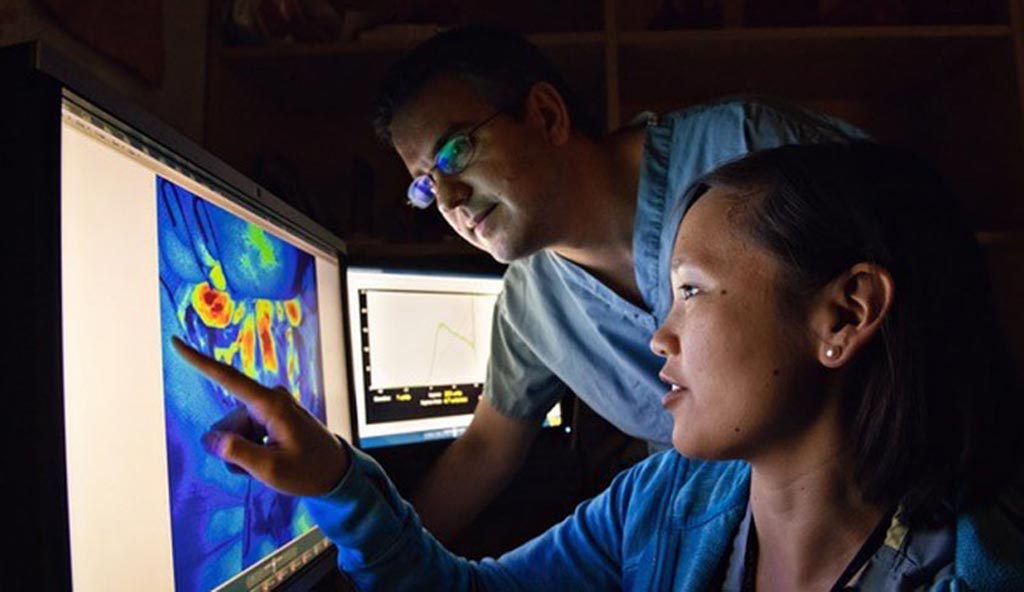Intraoperative Angiography Predicts Laryngectomy Complications
By MedImaging International staff writers
Posted on 12 Jun 2019
Intraoperative angiography can be used to evaluate hypoperfusion and potential pharyngocutaneous fistula (PCF) formation in patients undergoing salvage laryngectomy, according to a new study.Posted on 12 Jun 2019
Researchers at Michigan Medicine (Ann Arbor, USA) conducted a prospective clinical trial in 41 patients who underwent salvage laryngectomy following radiation treatment failure between 2016 and 2018. After tumor extirpation and prior to reconstruction, 10 mg of indocyanine green (ICG) dye was infused. The researchers then used laser angiography, which illuminates the dye, to observe blood flow and the ingress rate of the dye in the pharyngeal mucosa. The primary outcome measure was formation of a PCF.

Image: Michigan Medicine surgeons examining an intraoperative perfusion angiogram (Photo courtesy of Leisa Thompson/ Michigan Medicine).
The results revealed that patients who developed a PCF had significantly lower fluorescence (FHYPO) and ingress rates than those who did not develop a fistula. There were no fistulas in patients with an FHYPO higher than 150 or an ingress rate higher than 15. There was a 50% fistula rate in patients with a FHYPO rate lower than 103 and ingress rates lower than 6. The researchers suggest the information could help identify high-risk patients that need to stay in hospital longer, or that require further interventions. The study was published in the May 2019 issue of Annals of Surgical Oncology.
“Radiation damage is something you can't always see. There have been very few examples in the literature that would explain or predict who's going to have a complication,” said senior author Matthew Spector, MD, assistant professor of otolaryngology-head and neck surgery at Michigan Medicine. “We are developing a randomized clinical trial to assess whether cutting back more tissue leads to fewer fistulas in the high-risk group. We need to find an intervention that can lower this risk.”
PCF, a common complication of laryngectomy, considerably increases morbidity, hospitalization time, and expense. The salivary fistula also predisposes to major injury of neck vessels and causes discomfort because of feeding through a nasogastric tube. Prior radiation therapy seems to increase the risk of fistulization.
Related Links:
Michigan Medicine














